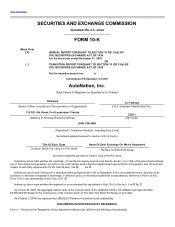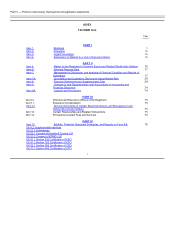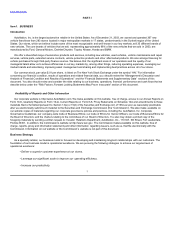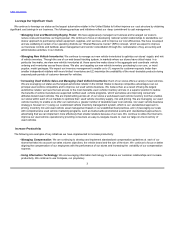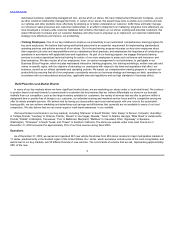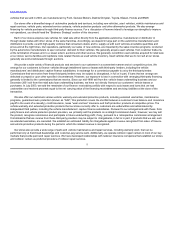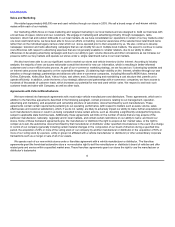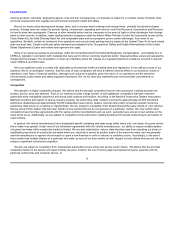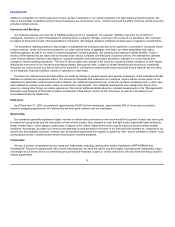AutoNation 2003 Annual Report Download - page 5
Download and view the complete annual report
Please find page 5 of the 2003 AutoNation annual report below. You can navigate through the pages in the report by either clicking on the pages listed below, or by using the keyword search tool below to find specific information within the annual report.
Table of Contents
Leverage Our Significant Scale
We continue to leverage our status as the largest automotive retailer in the United States to further improve our cost structure by obtaining
significant cost savings in our business. The following practices and initiatives reflect our deep commitment to cost management:
• Managing Cost and Maximizing Buying Power: We have aggressively managed our business and leveraged our scale to
reduce costs and maximize our buying power. We continue to focus on developing national vendor relationships to standardize our
stores’ approach to purchasing certain equipment, supplies, and services, and to improve our cost efficiencies. We have developed
and are validating in certain of our operating districts our “Shared Resource Center” (SRC) concept, which we expect to improve
our business controls and facilitate asset management and vendor consolidation through the centralization of key accounting and
administrative activities in our districts.
• Managing New Vehicle Inventories: We continue to manage our new vehicle inventories to optimize our stores’ supply and mix
of vehicle inventory. Through the use of our web-based tracking system, in markets where our stores have critical mass in a
particular line-make, we view new vehicle inventories at those same line-make stores in the aggregate and coordinate vehicle
ordering and inventories across those stores. We also are targeting our new vehicle inventory purchasing to our core, or most
popular, model packages. We expect our inventory management to enable us to (1) respond to customer requests better than
smaller independent retailers with more limited inventories and (2) maximize the availability of the most desirable products during
seasonal peak periods of customer demand for vehicles.
• Increasing Used Vehicle Sales and Managing Used Vehicle Inventories: Each of our stores offers a variety of used vehicles.
We are leveraging our status as the largest automotive retailer in the United States to develop competitive advantages over our
principal used vehicle competitors and to improve our used vehicle business. We believe that, as a result of being the largest
automotive retailer, we have the best access to the most desirable used vehicle inventory and are in a superior position to realize
the benefits of vehicle manufacturer-supported certified used vehicle programs, which we believe are improving consumers’
attitudes toward used vehicles. We are implementing across all of our stores a web-based used vehicle inventory tool that enables
our stores within each of our markets to optimize their used vehicle inventory supply, mix and pricing. We are managing our used
vehicle inventory to enable us to offer our customers a greater number of desirable lower cost vehicles. Our used vehicle business
strategy is focused on (1) using our customized vehicle inventory management system, which is our standardized approach to
pricing, inventory mix and used vehicle asset management based on our established best practices, and (2) leveraging our scale
with comprehensive used vehicle marketing programs, such as market-wide promotional events and standardized approaches to
advertising that we can implement more effectively than smaller retailers because of our size. We continue to utilize the Internet to
improve our used vehicle operations by providing consumers an easy-to-navigate means to view our large on-line inventory of
used vehicles.
Increase Productivity
The following are examples of key initiatives we have implemented to increase productivity:
• Managing Compensation: We are continuing to develop and implement standardized compensation guidelines at each of our
stores that take into account our sales volume objectives, the vehicle brand and the size of the store. We continue to focus on better
aligning the compensation of our employees with the performance of our stores and increasing the variability of our compensation
expense.
• Using Information Technology: We are leveraging information technology to enhance our customer relationships and increase
productivity. We continue to use Compass, our proprietary
3

